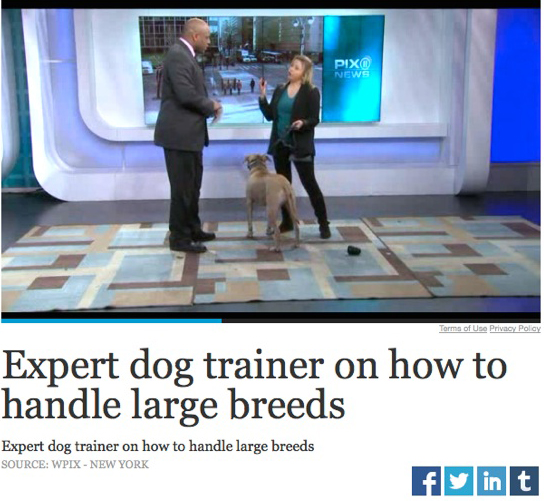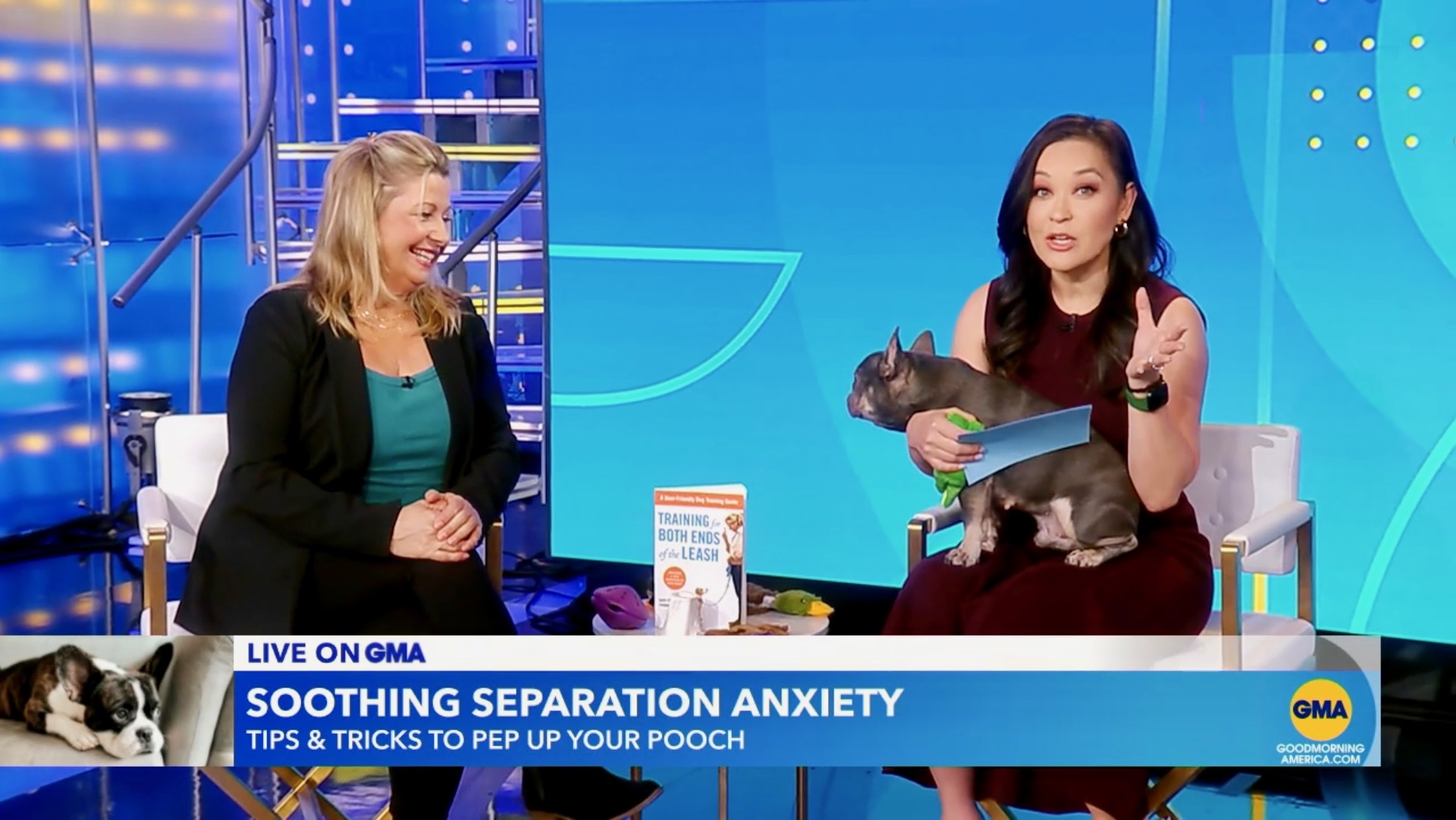


A Brief Paws Podcast with Ani Corless
A Brief Paws takes a moment to talk with Special Guests about a wide variety of topics in the pet industry . Like health and wellness, training, rescue, and even the newest fashion trends and products. Hosted by Ani Corless, Founder of NYC pet grooming company, Luxury Groomer. Video on YouTube! Edited by Mike Mroch

Warning signs your dog may be feeling blue

The New Yorker What Will Become of the Pandemic Pets?
Jeffrey Beri arrived in Guangzhou near the end of April and spent two weeks quarantined in a hotel. A few times a day, officials in hazmat suits came to check on him. He watched television news and stewed over what he perceived to be Communist Party propaganda and a crackdown that China was launching on pet dogs.
“You just want to throat-punch everyone on TV,” he told me by phone, half whispering, certain that the room was bugged. “You feel like a caged animal, watching your kids get slaughtered.”
By kids, he meant dogs, the ones he couldn’t save from the Chinese meat market while he languished in quarantine. Beri, a fifty-six-year-old former jewelry designer, is a co-founder of an organization called No Dogs Left Behind, which rescues dogs in East Asia and arranges for their adoption in North America. In 2014, after watching an anti-animal-agriculture documentary called “Cowspiracy,” he sold his jewelry company and dedicated his life to animal welfare. In the spring of 2016, he went to China and had his first encounters with the dog-meat trade and the rescue game.
Each year, in the city of Yulin, in Guangxi, scores of dogs are killed for food, in what Westerners call the Yulin Dog Meat Festival. This spectacle, which lasts ten days, around the summer solstice, is no longer sanctioned by the local government, but it hasn’t been shut down. In recent years, the festival has attracted a migration of animal-rights activists, among them Beri and N.D.L.B., who identify slaughterhouses and, with or without the help of the authorities, attempt to take the dogs. They also intercept trucks loaded with dogs, which are often crammed, several at a time, into chicken cages. Filthy, malnourished, traumatized, and diseased, the dogs have been picked up on the street or bought or stolen from their owners. As a result, the traffickers usually lack the required paperwork and are obliged to surrender the dogs to the police, who have nowhere to place them, and often would just as soon not deal with them. The situation gives the activists the pretext to take the dogs and transfer them to shelters they have established around the country, where they can, at least in theory, treat, vaccinate, and sterilize them, before seeking new homes for them in China or overseas.
The dog rescuers, in their promotional videos, depict their operations as commando raids. Beri deploys a security detail, burner phones, and decoy trucks, and owing to his intensity both of feeling and of activity—climbing a tree to jury-rig tarps, ignoring bite wounds and scratches, directing a clandestine nighttime truck-stop transfer of confiscated cargo—he has come to be known, by his Chinese counterparts, as the General; other activists call him Dog Rambo Jesus.
Read More

New York Magazine names Kate Perry the “Best Dog Trainer” in New York City!


Surviving A New York Winter With Your Dog Tips From Rock & Rawhide

The Pet Prescription New Ways To Unleash Your Animal’s Healing Power

Kate and her sidekick Sophie give advice on the benefits of dog training, health checks, basic commands and early socialization.

In this spot on The Today Show, Kate talks about the do’s and don’t of giving pets as gifts and how to find the right breed to fit your lifestyle.

Kate worked on set with 20 different breeds to model the Juicy Couture brand’s new line of dog accessories aptly called “Juicy Crittoure.”

Bergdorf Goodman (Unleashed)

On PIX 11 News, Kate discusses some helpful hints on handling larger breed dogs


Dog Trainer To Celebs – Kate Perry Sings to Dog Ears!
Kate Perry and Yvonne Conza have created a new style to dog training in their“released” book titled; Training for Both Ends of the Leash! The training angle of the book focuses on empowering the pet parent through specialized hands-on training, using positive reinforcement (where are the treats?), and incorporating the lifestyles of both pet and parent – the short and long leash of it!
Kate Perry has been named “Best Dog Trainer” by New York Magazine, and Yvonne Conza is a leading pet advocate and co-founder of Woof Patrol, a pawsitive animal organization. Together, their combined efforts have established a fresh way to “teach an old dog a new trick.”
Read More

New York Magazine names Kate Perry the “Best Dog Trainer” in New York City!
“Doggie life without a backyard is difficult enough. But what if your pooch is afraid of elevators? Doormen? Skateboards? Other dogs? Anything’s mostly avoidable if you live in a suburb or the country, but all those factors are just part of city life. Kate Perry, a professional dog trainer for nearly a decade, has quickly become known as the expert on urban canine neuroses. She’ll take on housebreaking, leash aggression, separation anxiety, sibling rivalry, and the arrival of a (human) baby in the household. Perry offers one-on-one sessions and has a knack for breaking down a pup’s sensitivity to noise and crowds, but what really sets her apart is her ability to deal with tricky pets and persnickety owners; she’s quick to home in on the specific issues on both ends of the leash.”
NY MAG ’10
Kate worked on set with 20 different breeds to model the Juicy Couture brand’s new line of dog accessories aptly called “Juicy Crittoure.”

What you need to know before bringing a puppy home for your kids
A few months of work will result in a lifetime of bliss.
Between 38 and 48 percent of American households have a dog, making it the most popular pet in the US by far. It’s easy to understand why, too—the benefits of owning a pooch include better physical and mental health, as well as being more social.
Many parents look to bring a furry pal into the family as a companion for their children, but also as an opportunity for the younglings to learn how to take responsibility for another being. Caring for a dog, especially a puppy, however, is not easy.
Before you bring one into your home, there are some things you need to consider to make sure that it’s right for your lifestyle.
Make the decision as a family
Before adopting a puppy, you and everyone in your household should have a conversation about whether doing so is right for you.
Kate Perry, dog trainer and author of Training for Both Ends of the Leash, recommends that families start with one simple question: Do you have the resources to invest in this puppy?
Dogs require food, training, exercise, toys, space, medical care, just to name some of their needs. You’ll also have to account for other possible expenses such as pet insurance and daycare or boarding. According to Jenna Tregowski, a registered veterinary technician in Georgia, the cost of owning a dog can range from $1,400 to $4,300 a year. Multiply that for a lifespan that can range from 10 to 20 years.
And that is just money. Man’s best friend, no matter their size or age, also requires two of your most precious resources—time and attention.
As part of your conversation, you’ll need to break down the responsibilities each member of the family will have around the pup. But no matter how much of an active role you want to give your kids, or how much they swear they will take care of the new family pet, all parents should consider themselves the primary caretakers, advises Patricia McConnell, a zoologist and certified applied animal behaviorist. That’s because over a dog’s lifespan, your children will grow up and start having other responsibilities. They may even move out.
“It’s great if kids want to help,” McConnell says. “But I would suggest not counting on it.”
Pick the right dog for you
Not all dogs will fit all families. You want a pooch with energy levels, exercise requirements, and grooming needs that match what you have the time and patience to meet, so understanding which breeds fit your lifestyle is a solid first step. Do your research, take some online quizzes, and make sure you consult with a trainer, a vet, or a volunteer at your local animal shelter. And don’t forget to spend actual time with dogs—visit your local dog park, ask owners about their fur babies, go sit in on a training class, and pet every pup you possibly can.
However, breed is only part of it. Perry says that each dog’s temperament is much more important, particularly if you have children. Ask if the dog you are considering has had experience with kids. Whenever you meet them, make sure you bring the entire family so you can observe the dynamic between you and the pooch. The behavior and temperament of the dog’s parents can also give you an idea of what the pup will grow up to be, McConnell says, so make sure you find out what you can about them.
Don’t forget to consider and rule out potential family allergies. No matter how much you love a puppy, if you or one of your children is allergic, coexisting will be a nightmare for everyone involved. When you find that special pooch, spend some time with them and make sure all members of your family touch them a lot to give your bodies an opportunity to reveal any allergies that might be lurking—before you make a commitment.
Train the puppy – and the whole family
Training a puppy takes a lot of work and patience. It can be frustrating and time-consuming, and sometimes it’ll feel like you’re just spinning your wheels.
But at the end of the day, good training, both for your dog and your entire household, is critical to ensuring a safe and healthy relationship.
“A two-month investment in properly training and socializing the puppy, and your family, can create a lifetime of bliss,” says Perry.
A good instructor will tailor training to your puppy’s personality and temperament, but will also teach you to set expectations and keep your dog excited about learning. A professional will help you maintain consistency in your commands and work through any household-specific challenges.
Have your children attend classes with you, and make sure you give them the opportunity to participate at home when practicing commands. But remember both your kids and your dog have a limited attention span, Perry says—learn where that line is.
Finally, don’t let kids handle training on their own. Young children love to repeat things, and excessive repetition can teach your dog to dislike training. You don’t want to do that, so make sure at least one adult supervises and manages each session, McConnell says.
Establish ground rules
Rules should be clear, consistent, and enforced. Otherwise, your children and the new puppy will be confused about what exactly the boundaries are.
The one rule that stands out above them all, Perry says, is that you should always supervise small children when they’re around a dog. Any dog. And yes, that includes your own puppy. One thing your kid and your four-legged pal have in common is that they are unpredictable, so you’ll need to teach them to be around each other. Fail to do this and your kid might inadvertently hurt their pet, or the pup might respond aggressively to something that was only intended as play.
Your children should never play chase with the dog, or pull their tail. They’ll also need to respect their pet’s safe space, and leave them alone when they are resting in their crate or bed—or even dog house. As for the pooch, rules should be fairly similar. Chasing or roughhousing with the children should be off limits, as should any kind of nipping or using their teeth. Perry recommends helping your dog learn gentleness by smearing some peanut butter or yogurt on a child’s hands and letting the puppy lick it off. If your dog uses its teeth, have your child take their hand away for a short time.
A puppy jumping in excitement may be cute when they’re 10 pounds, but many breeds will quickly outgrow your children—or even you. To teach a dog not to jump, Perry teaches kids to stand like a tree—still, hands up, back to the dog—and not re engage until it has stopped jumping. Once they do, mark the behavior with positive reinforcement, like a treat or pets.
After these general guidelines, think about what other specific rules you’ll need your pooch to follow. This includes whether they’ll be allowed on any of the furniture, deciding mealtimes and feeding processes, establishing what areas of the house and yard are off limits for them, and how the dog will interact with other pets you might have. The more you can decide on these rules in advance, the more consistent you can be. Still, you’ll need to remain flexible—as you spend more time with your dog and learn to understand them better, you may want to change or replace some of these guidelines.
Above all, be patient. This is a new experience for everyone, and there will be setbacks. But with a solid investment of time and training in the beginning, your puppy will be able to become a full member of your family, and be a loving companion for you and your children for years to come.
Please click here for the original article.
BY JEAN LEVASSEUR | UPDATED OCT 8, 2021 7:30 AM

Adoption Tips with Kate Perry of Kate Perry Dog Training
With such a big uptick in adoptions over the past year, we wanted to share a few tips from an expert to help guide the adoption process!
Meet Kate Perry. Once voted Best Dog Trainer in NYC by New York Magazine, she’s been featured on Today Show and The Daily Show among others and is the author of Training for Both Ends of the Leash. Aside from running her own business KATE PERRY DOG TRAINING, Kate also mentors dog trainers for Animal Behavior College and volunteers as a board advisor of the non-profit Rock & Rawhide.
What are Kate’s tips for adopters?
- Know your own lifestyle & limitations. “If you’re a couch potato, don’t rescue a high-energy breed that demands a lot of exercise & stimulation. Many dogs end up in shelters for that reason.” Kate continues, “Are they Party Animals? Sensitive Artists? Workaholics? Methodical Thinkers? Look for a good match for your own personality. Adopting a pet is like adopting a child. Ask yourself, ‘Am I capable, emotionally and financially?’”
- Give time for any behavioral issues to emerge, and be patient when they do. Kate recalled working with a 3-year-old Jack Russell Terrier named Tucker, who was an angel the first few weeks after being adopted. One day, he started becoming circumstantially aggressive. It took a whole year to help him overcome this issue, but the hard work gave him 10 happy years with his family. “The true nature of the dog isn’t going to manifest itself until six weeks later,” Kate says. “They’re in a bit of a shock at first. Even with a puppy, you’ll get another layer to the dog two months in.”
- Train, exercise, and socialize! “When you rescue, you are rehabbing a dog. It’s an investment, but it’s very rewarding,” Kate says. “But no matter what dog you have, they need proper mental and physical stimulation.”

Everything You Need to Know About Introducing a Puppy Mill Dog Into Your Home
Rescuing a dog who spent her entire life in a cramped, filthy cage without any access to toys, exercise, proper veterinary care, grooming or any kind of socialization can be an extremely challenging — yet rewarding — experience. Note: I’m talking about puppy mill dogs, who are bred at deplorable commercial breeding facilities that put profit over the well-being of its dogs. Their offspring are sold exclusively at pet stores, or shipped across the country in an online sale. When they can no longer mate and have puppies, these dogs are often killed. They no longer are of use to the breeders.
Fortunately, in the dog world, there is a movement to put an end to these awful commercial breeding facilities. California recently became the first state to outright ban all pet stores from getting dogs from puppy mills, pet shops have shuttered their doors after public pressure and animal adoption rates are up (in lieu of purchasing a dog) . Yet, there is still a lot of work that needs to be done, along with some setbacks, including the Trump administration making drastic changes to the USDA’s animal welfare database, allowing for bad breeders to stay in business.
Still, huge organizations, like the Humane Society of the United States, along with local animal-welfare groups, continue to save thousands of puppy mill dogs each year – most of which get a second chance at life by finding a loving, forever home. Yet to acclimate these dogs to a home environment — where they are considered pets, not products – takes patience, but it is also an extremely rewarding experience.
For those looking to change the life of a puppy mill dog and welcome her into your life, here are some tips to make the transition easier for both of you.



